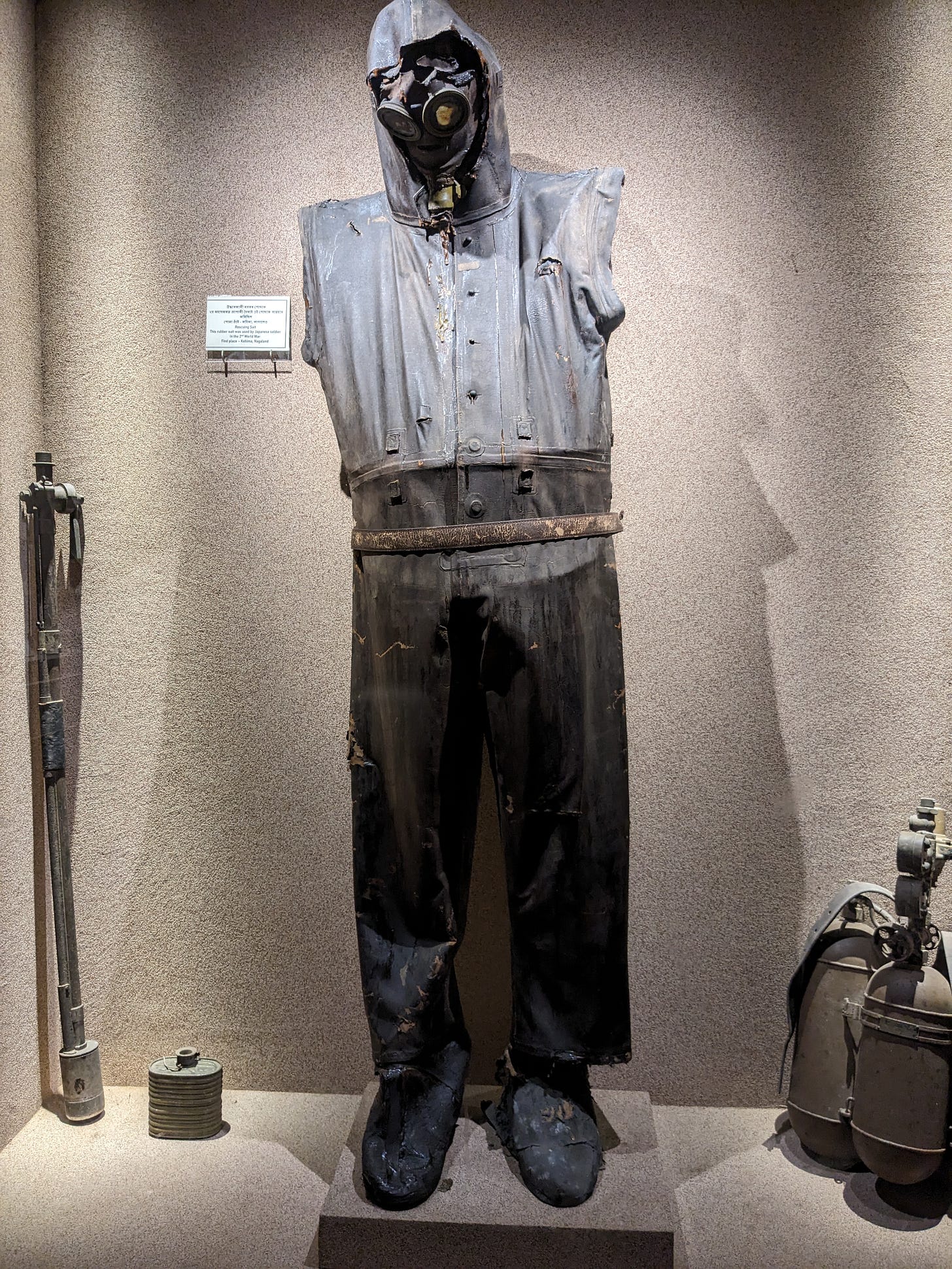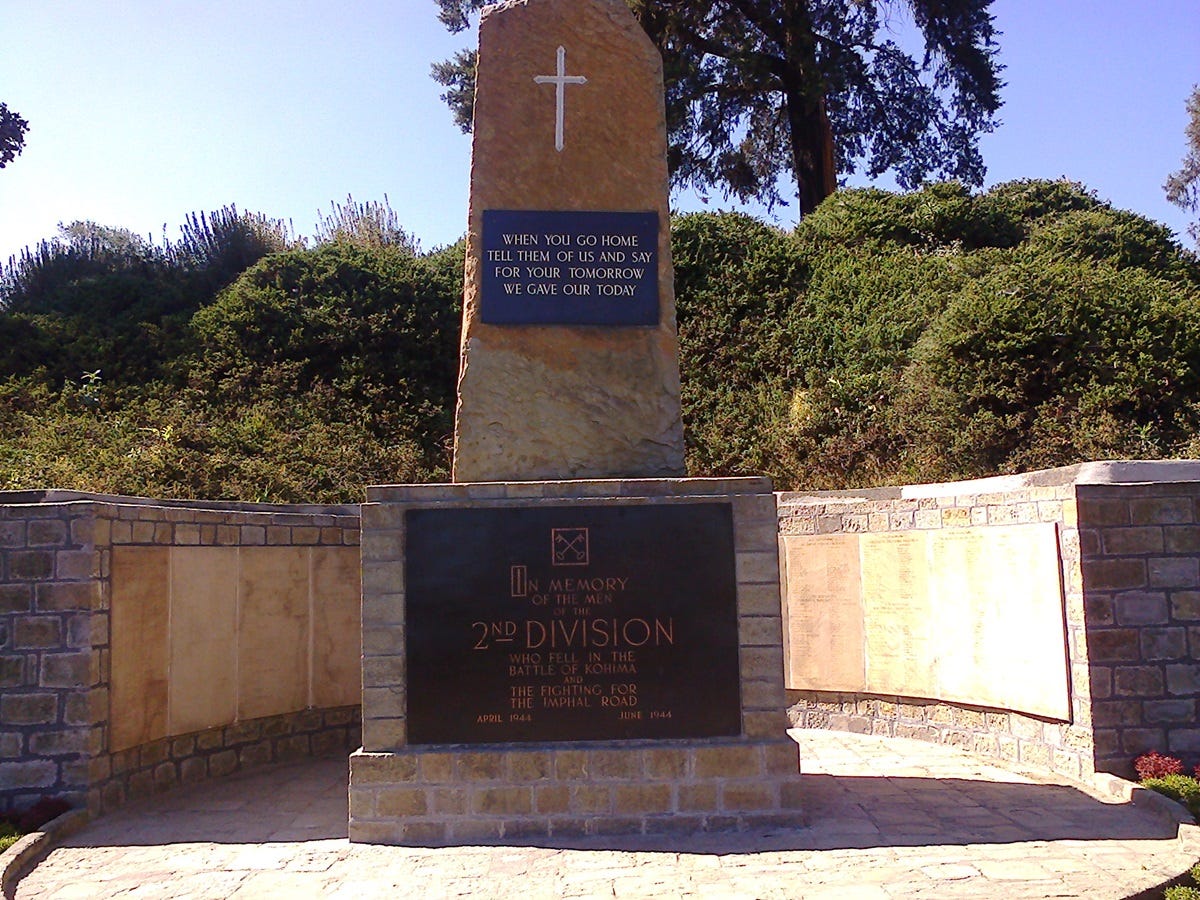A Forgotten Battle of World War II
Kohima in Nagaland, India was one of the most important sites of confrontation between the Allied and the Axis powers in South Asia.
The world remembers Normandy, Stalingrad, and Pearl Harbor as the pivotal battlegrounds of World War II. These events played decisive roles in turning the tide of the war at different stages. But there is one battle that remains largely forgotten from the annals of history.
Kohima, the capital of Nagaland (northeast India), was a critical location during World War II. For those unversed, Nagaland is most renowned for two things: headhunting and Bhoot jolokia or ghost peppers. Prior to the 19th century, one of the Naga tribes called Konyaks, used to practice headhunting for ritualistic and political purposes. The heads hunted by the Konyak warriors were then worn by them around the neck as trophies of victory. This tradition became nearly extinct by the time India became independent of British rule in 1947. Similarly, Bhoot jolokia or ghost peppers are traded by the Naga people and are among the hottest peppers of the world.
Until the 19th century, Nagaland was largely isolated from the rest of the country, with the exception of occasional economic exchanges. The British influx into the region, followed by Christian missionaries, opened up Nagaland to the ideas of globalization and capitalism. Despite resistance and frequent confrontations, Nagaland was annexed under the British territory. Many Naga men also participated in the first world war but it was during the second war that Nagaland, rather its capital Kohima, became the center of a major conflict.
Kohima lay on the route from Burma (now Myanmar) to the plains of India, a key supply route for the British Indian Army. The Japanese aimed to capture Kohima as part of their U-Go offensive, a larger plan to invade India and inspire an uprising against British rule. Kohima was not just a geographical objective but also a psychological one; its fall would have opened the gates for the Japanese to march into the heart of India.
There have been increasing efforts to raise awareness about the Battle of Kohima and Imphal. In 2013, it was unexpectedly voted as Britain’s greatest battle during a debate at the National Army Museum in London, surpassing more well-known battles like D-Day and Waterloo.
According to military historian Robert Lyman, the struggle “altered the course of the Second World War in Asia.”
The battle of Kohima commenced on April 4, 1944, when the Japanese 31st Division, under the command of Lieutenant General Kotoku Sato, began their assault on Kohima. The British forces, primarily composed of the 4th Indian Division, 2nd British Division, and the Assam Regiment, were vastly outnumbered and initially caught off guard. Though the Japanese had already overpowered the British in Burma, no one expected them to successfully navigate the mosquito-infested jungles, rugged hills, and fast-flowing streams leading to Kohima, and Imphal, the capital of Manipur. The Japanese forces quickly encircled the defenders, leading to what is famously known as the Siege of Kohima.
One of the most intense and brutal phases of the battle occurred at the Deputy Commissioner’s bungalow, particularly on the adjacent tennis court. Here, the British and Indian forces engaged in hand-to-hand combat with the Japanese soldiers. The battle lines were so close that grenades were lobbed across the court, and the fighting was often described as “gruesome” and “savage.” The tennis court, once a place of leisure, became a center of violence and bloodshed.
The besieged British-Indian soldiers held out until reinforcements arrived. On April 18, the British 2nd Division broke through the Japanese lines, relieving the besieged garrison. This marked the beginning of the Japanese retreat. However, confrontations continued for several weeks as the Allies slowly pushed the Japanese back along the Imphal-Kohima road.
After three grueling months, by June 1944, despite orders to hold their position, the Japanese division, having suffered over 7,000 casualties and with supplies nearly exhausted, retreated to Burma. Many Japanese soldiers succumbed to cholera, typhoid, and malaria, but the majority died of starvation as they ran out of supplies.
The Battle of Kohima was a turning point in the Burma Campaign.
It marked the first major defeat of the Japanese Army on land during World War II.
The failure of the Japanese U-Go offensive not only prevented their advance into India but also shattered their dreams of creating an empire in Southeast Asia.
Despite its significance, the Battle of Kohima, for a long time, did not receive the recognition it deserved in the immediate aftermath of the war. The remoteness of the location, coupled with the overshadowing European theatre, meant that the sacrifices made on this front were largely forgotten by the global community. However, for the people of Nagaland and the veterans who fought there, Kohima remains a symbol of resilience and determination.
The Kohima War Cemetery, maintained by the Commonwealth War Graves Commission, serves as a visual reminder of the battle. The cemetery’s epitaph, inscribed on the memorial, presents these words:
“When You Go Home, Tell Them Of Us And Say, For Your Tomorrow, We Gave Our Today.”
This epitaph testifies the sacrifice of those who fought and died in Kohima, presenting the realities and the cost of war.
After 1947, the Battle of Kohima was neglected as a colonial conflict, with post-war discourse in India focusing more on the independence struggle led by Mahatma Gandhi. This led to sidelining of the efforts of the Naga people whose efforts paved the way for Japanese defeat. Thousands from the Naga ethnic community fought alongside the British. They laid out trenches for the British-Indian army, acted as spies, and map-readers and even took up arms to fight the Japanese.
But for the Nagas, both the British and the Japanese were intruders into their native lands.
The Nagas did not side with the British because they supported their cause. Rather, they simply did not wish any bloodshed in their sacred land. For the Nagas, it was a struggle for the preservation of their land and their ethnic identity. There are few accounts that tell the story of Kohima from the perspective of the Nagas. Mmhonlumo Kikon’s His Majesty’s Headhunters: The siege of Kohima that shaped world history, is one recent account that retells the Naga side of the story.
Since 2019, efforts of peace have been initiated between Japan and Nagaland when the Japanese requested the Nagaland authorities to collect the remains of the dead soldiers and take them back to their families. This Naga-Japanese peace initiative is even more strengthened through their joint collaboration to build a memorial and eco-park commemorating the World War II battle. These efforts open up further possibilities for new narratives of the battle, perhaps from the perspective of the Nagas.






“When You Go Home, Tell Them Of Us And Say, For Your Tomorrow, We Gave Our Today.” That quote brought a tear…
Thanks for writing on Kohima- Nagaland. I used to travel more often between 1975-79 to Kohima and Imphal. The images of the cemetery, the epitaphs at each of the graves ( in my many visits, I had stopped by at all of them to read them with a prayers on my lips) still flash before my eyes, whenever Kohima is mentioned.
Very honest and hardworking people.